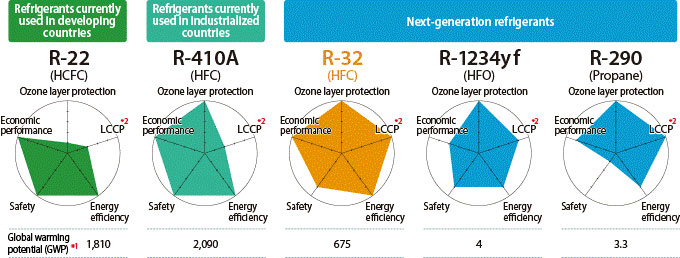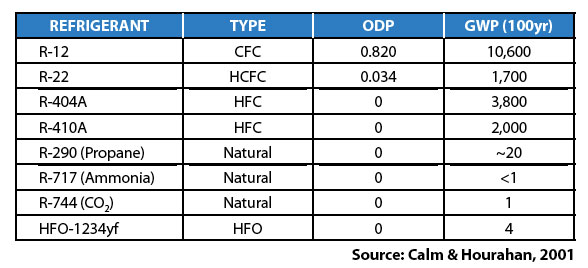
I have heard about Kigali Amendment for the first time, when I attended Sustainability Summit 2018 on 23rd and 24th of September 2018 organized by GORD. MrEngr. Yaqoub Al-Matouq, explained about KigaliAmendment
Most Sustainability Professionals are aware about the environmental impact of refrigerants Ozone Depletion and Global Warming. We are also aware of Montreal Protocol which aims to phase out CFCs and HCFCs
Most green building rating systems such as LEED, GSAS etc. talks about refrigerant management. GSAS goes a step ahead and talks about refrigerant leak detection.
In this article let me summarize what people know in general and what is new which I learned from a paper presented on Kigali Agreement in GORD Sustainability Summit 2018
Facts known by most Sustainability Professionals
- There are two major environmental impacts associated with refrigerants namely global warming and ozone depletion
- Ozone depletion is an immediate danger and global warming is comparatively slow process. This is the reason LEED V4 has made a prerequisite not to use
- CFCs, although it is phased out in many countries and CFC based equipment are not available in the market
- The first generation of refrigerantsCFCs has both higher ODP(Ozone depleting potential) and GWP(Global Warming Potential)
- The second generation of refrigerants HCFCs has low ODP and higher GWP, this type of refrigerants are mostly used in small window ACs and split ACs. However equipment manufactures in Europe and US have already stopped manufacturing equipment using HCFC
- The third generation of refrigerants HFCs has zero ODP but high GWP this is used in most chillers, refrigerators and modern air-conditioning equipment
- HFCs have significantly reduced ODP but since HFCs require more operational pressure, hence consume more energy resulting in higher global warming.
Now let us talk about the facts not known to most Sustainability Professionals (at least I don’t know about it before attending the GORD Sustainability Summit).
Kigali agreement aims to reduce the use of HFCs starting 2019
I always thought of what is replacement for HFC? Generally the answer is natural refrigerants such as ammonia, hydrocarbons, water, CO2 and air. Even thoughthese refrigerants are environmental friend they had various disadvantages.
So what is the replacement of HFCs, the answer is HFO Hydro Flouro Olefin.
Hydro Flouro Olefin called as HFO-1234yf has zero ODP and very less GWP hence contributes to low total contribution to climate change. Further the operating pressure required for HFO 1234yf is same as HFC 134a.
ODP and GWP for Various Refrigerants


Source: Daikin-Low Environmental Impact Refrigerants
How HFO is different from HFC?
HFC is composed of hydrogen, fluorine and carbon atoms connected by single bonds between the atoms whereas HFO refrigerants are composed of hydrogen, fluorine and carbon atoms, but contain at least one double bond between the carbon atoms.
Is HFO available in the market?
- There are two major manufacturer’s producing HFO refrigerants Honeywell and Dupont
- Honeywell’s HFO refrigerants are in the commercial name Solstice and Dupont in the name of Opteon
- Trane has already announced its new version of chillers with Solstice zd from dupont.
The HVAC market is all set to go beyond HFC
Conserve Solutions will be happy to assist your projects. Our offices are located in India, UAE, Qatar, Saudi Arabia, Canada, United Kingdom, Egypt and Singapore.
Author
-

Mr. K M Bazeeth Ahamed is an USGBC LEED Faculty & consultant in Green Buildings. He has completed his Post Graduation in Mechanical Engineering from Birla Institute of Technology in 2002 and has spent 12 years in Academics, Research, MEP Contracting, Energy Audits and Green Building Consultancy.

